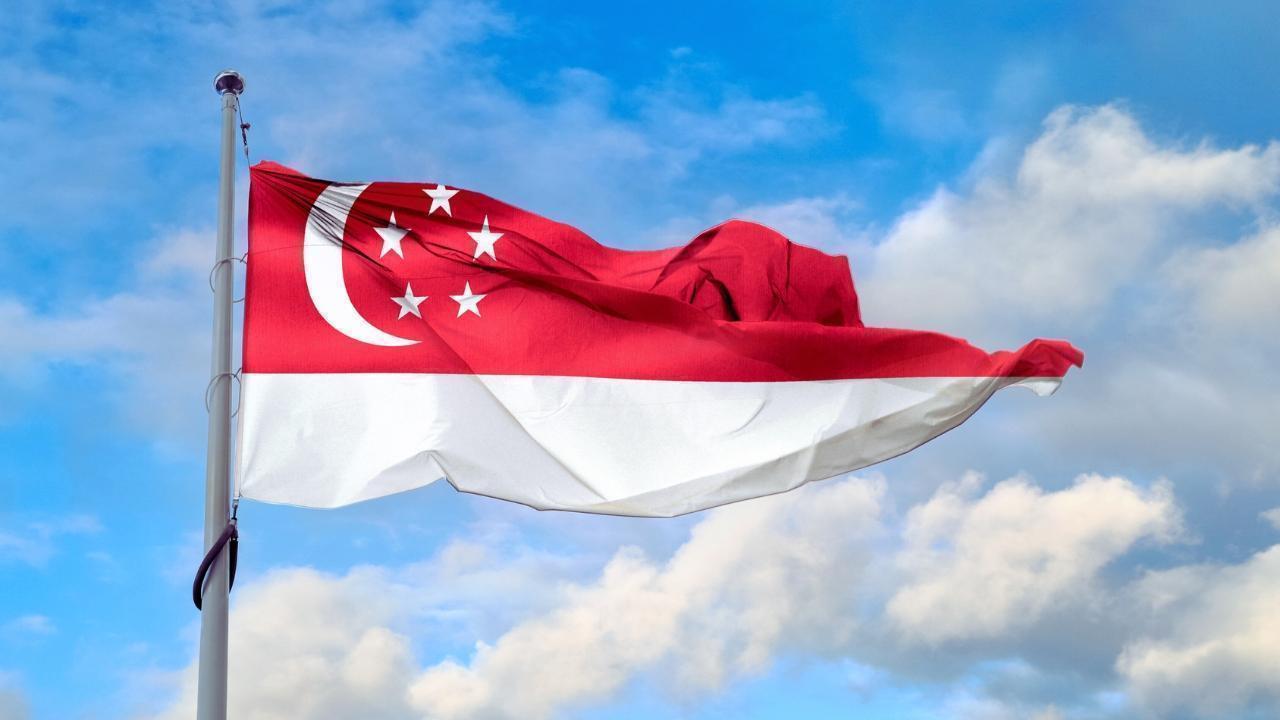
Join 10k+ people to get notified about new posts, news and tips.
Do not worry we don't spam!

Post by : Anis Farhan
Singapore, Southeast Asia’s financial powerhouse and diplomatic anchor, finds itself at the epicenter of growing tensions between the United States and China. As both superpowers vie for influence in the Indo-Pacific, Singapore has adopted a stance it describes as “principled neutrality”—engaging both sides while refusing to align unequivocally with either.
This strategy isn’t new. Singapore has long embraced strategic ambiguity—hosting American naval forces while expanding economic ties with China. But the stakes are rising. Recent developments, from the South China Sea militarization to U.S.-led tech sanctions and regional trade realignments, are squeezing space for neutrality.
In this environment, Singapore’s brand of diplomacy is being put to the test. Can it maintain relevance and autonomy without being drawn into the geopolitical undertow? As 2025 unfolds, the island nation must recalibrate its policies to retain both its strategic partnerships and its sovereign voice.
Singapore remains one of the U.S.’s most trusted partners in the Asia-Pacific. A key member of Washington’s security architecture, it hosts a rotational presence of U.S. Navy ships and engages regularly in joint military exercises. The 2019 renewal of the U.S.-Singapore Defense Cooperation Agreement reinforced this defense alignment for another 15 years.
Economic ties are also strong. The U.S. is Singapore’s third-largest trading partner and a major source of tech investments. In 2025, U.S. chip giant Intel announced plans to expand its R&D facility in the city-state, deepening bilateral cooperation in critical supply chains. This comes amid Washington’s broader effort to diversify away from Chinese manufacturing.
However, Singapore has avoided endorsing U.S.-led initiatives like AUKUS or the Indo-Pacific Economic Framework (IPEF) with full-throated enthusiasm. Officials often emphasize that regional security arrangements should be inclusive, not exclusionary. Foreign Minister Vivian Balakrishnan has repeatedly stated that the region must not become a theater for “binary contestation.”
This calibrated engagement reflects Singapore’s fear of becoming collateral in a strategic rivalry that shows no sign of cooling.
China remains Singapore’s largest trading partner, with bilateral trade exceeding S$150 billion in 2024. The two countries have robust ties across infrastructure, finance, education, and digital economy sectors. Singapore is also the largest foreign investor in China’s Belt and Road Initiative (BRI), and a partner in multiple cross-border projects, including the China-Singapore (Chongqing) Connectivity Initiative.
Despite this economic closeness, Singapore has remained cautiously noncommittal on issues of Chinese sovereignty and strategic posturing. It has avoided endorsing Beijing’s claims in the South China Sea and consistently affirms the United Nations Convention on the Law of the Sea (UNCLOS) as the legal framework for maritime conduct.
In 2025, Singapore joined several ASEAN members in voicing concern over increased Chinese coast guard activities near contested waters, reflecting its nuanced diplomatic playbook—supporting rule-based order without overtly criticizing Beijing.
Singapore’s relationship with China is one of mutual benefit but also strategic hedging. The city-state is aware that dependency on a single power—economic or otherwise—could undermine its broader autonomy.
Singapore’s diplomatic tightrope walk is further complicated by its role within ASEAN. While it is not ASEAN’s largest member, Singapore often shapes consensus and agenda-setting, especially on matters of trade, digital policy, and regional security.
In 2025, Singapore is spearheading ASEAN’s discussions on AI governance and cross-border data sharing—issues with high geopolitical stakes. As ASEAN debates how to position itself between U.S.-China tech rivalry, Singapore advocates for digital sovereignty and regional standard-setting rather than outsourcing regulatory power to external blocs.
On regional diplomacy, Singapore continues to push for peaceful dialogue over confrontation. It supports ASEAN’s “five-point consensus” on Myanmar and has condemned political violence in the region. These positions bolster its image as a responsible middle power, though critics argue Singapore could take a firmer stance on authoritarian abuses.
Ultimately, Singapore’s quiet leadership rests on credibility. It must show that neutrality doesn’t mean indifference—and that strategic restraint is a strength, not a weakness.
Singapore’s economic diplomacy complements its geopolitical balancing act. As a founding member of CPTPP and RCEP, it champions open trade and regional integration. In early 2025, it concluded a bilateral digital economy pact with the EU, marking a further pivot toward multilateral diversification.
The government is also encouraging local firms to explore new markets beyond the U.S.-China axis—particularly in India, the Middle East, and Africa. These efforts aim to reduce over-reliance on any single power bloc and cushion Singapore from external shocks.
At home, economic policymakers are investing in resilience. The 2025 national budget includes significant allocations for cybersecurity, semiconductor innovation, and maritime trade modernization—all of which enhance Singapore’s strategic importance to both East and West.
Singapore’s strategic neutrality is sustainable—but not invulnerable. Rising regional militarization, economic bifurcation, and digital sovereignty battles are compressing the space for equidistant diplomacy.
The coming year may bring fresh stress tests: potential U.S. pressure to align on semiconductor export controls, possible Chinese retaliation over ASEAN maritime positions, or regional instability spilling over from Myanmar and the South China Sea.
Yet Singapore’s core advantage lies in its consistency. By adhering to international law, investing in diplomacy, and maintaining institutional competence, it continues to punch above its weight in global affairs.
In a region where lines are hardening, Singapore is drawing curves—staying flexible, firm, and future-focused. Whether that remains tenable will depend not just on its leadership, but on how the region navigates the next phase of geopolitical realignment.
This article is intended solely for informational and editorial purposes. It does not constitute diplomatic guidance or an official policy position. All views reflect the situation as of July 2025 and may evolve with new developments.










India Wins First Women’s World Cup 2025 Title
India lifts its maiden Women’s World Cup 2025 title! Harmanpreet Kaur’s team stuns South Africa in a

Manuel Frederick, 1972 Olympic Bronze Goalkeeper, Dies at 78
Manuel Frederick, a member of India’s 1972 Olympic bronze hockey team, has died in Bengaluru at 78 a

Muhammad Hamza Raja Wins IFBB Pro Card Puts Pakistan & UAE on Global Stage
Pakistani bodybuilder Muhammad Hamza Raja earns IFBB Pro Card in Czech Republic, showcasing Dubai’s

Shreyas Iyer’s Recovery Underway After Spleen Laceration in Sydney ODI
Shreyas Iyer is recovering after a spleen laceration sustained while taking a catch in the Sydney OD

Qatar Ready to Host FIFA U-17 World Cup 2025 in Aspire
Qatar confirms full readiness to host the FIFA U-17 World Cup 2025 from November 3–27, with world-cl

Wolvaardt’s 169 Sends South Africa Into Women’s World Cup Final
Laura Wolvaardt’s 169 powered South Africa to a 125-run semi-final win over England, booking a place